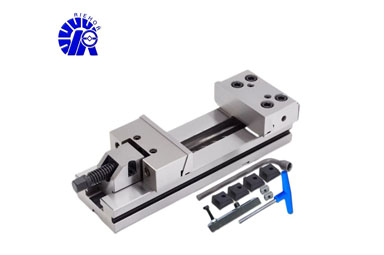A Guide to Selecting the Right Vise for the Job
Choosing the right vise is essential for ensuring precision, stability, and safety in various work applications. With a multitude of options available, selecting the appropriate vise for your specific job can be a crucial decision. In this comprehensive guide, we'll walk you through the key considerations to help you make an informed choice when selecting a vise.
Understanding Your Work Requirements
1. Workpiece Size and Material: Consider the size and material of the workpieces you'll be securing in the vise. Different vises are designed to accommodate various sizes and materials, so ensure compatibility with your specific tasks.
2. Type of Work: Assess the type of work you'll be performing. For example, woodworking, metalworking, or precision machining may require different features and specifications in a vise.
Types of Vises
1. Bench Vise: Ideal for general-purpose work on a workbench, bench vises come in various jaw widths and open capacities. Consider the jaw size and throat depth based on your typical workpieces.
2. Woodworking Vise: Designed specifically for woodworking tasks, these vises often have wider jaws and may include features like a quick-release mechanism for efficient operation.
3. Machinist Vise: Precision is paramount in machining work, making machinist vises suitable for metalworking tasks. Look for features such as a swivel base and precise adjustment capabilities.
Key Features to Consider
1. Jaw Type: Choose between smooth, serrated, or pipe jaws based on the nature of your workpieces. Serrated jaws provide a firmer grip, while smooth jaws are suitable for delicate materials.
Further reading:Mechanical Parts & Fabrication Services
2. Jaw Width and Opening Capacity: Ensure that the precision modular vise can accommodate the size of your workpieces. Consider both the jaw width and the maximum opening capacity to prevent limitations during work.
3. Construction and Materials: Look for vises constructed from durable materials like cast iron or steel for longevity and stability. Pay attention to the overall build quality for reliable performance.
Mounting Options
1. Bench Mounting: Bench vises are typically mounted directly to a workbench. Ensure that your workbench can support the weight and size of the chosen vise.
2. Swivel Base: A swivel base allows for 360-degree rotation, providing flexibility in positioning the workpiece. This feature is particularly useful in machinist vises for precise work.
Safety Considerations
1. Stability: Choose a vise that provides a stable grip on your workpiece to prevent slippage or movement during tasks.
2. Ergonomics: Consider features like quick-release mechanisms or ergonomic handles for efficient and comfortable operation, reducing the risk of fatigue or strain.
Conclusion
Selecting the right vise for the job is a crucial step in ensuring the success and safety of your work. By understanding your specific requirements, considering the type of vise, evaluating key features, and prioritizing safety, you can confidently choose a vise that meets your needs and enhances the quality of your work.
If you are interested in sending in a Guest Blogger Submission,welcome to write for us!


Comments
0